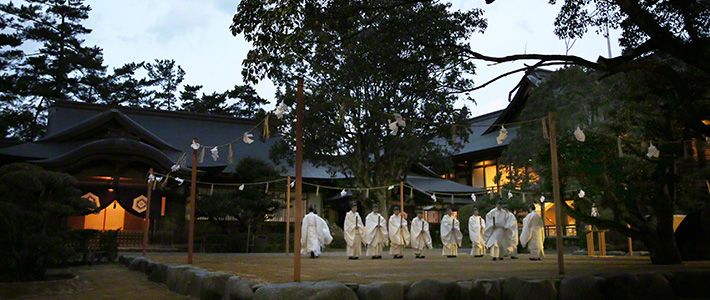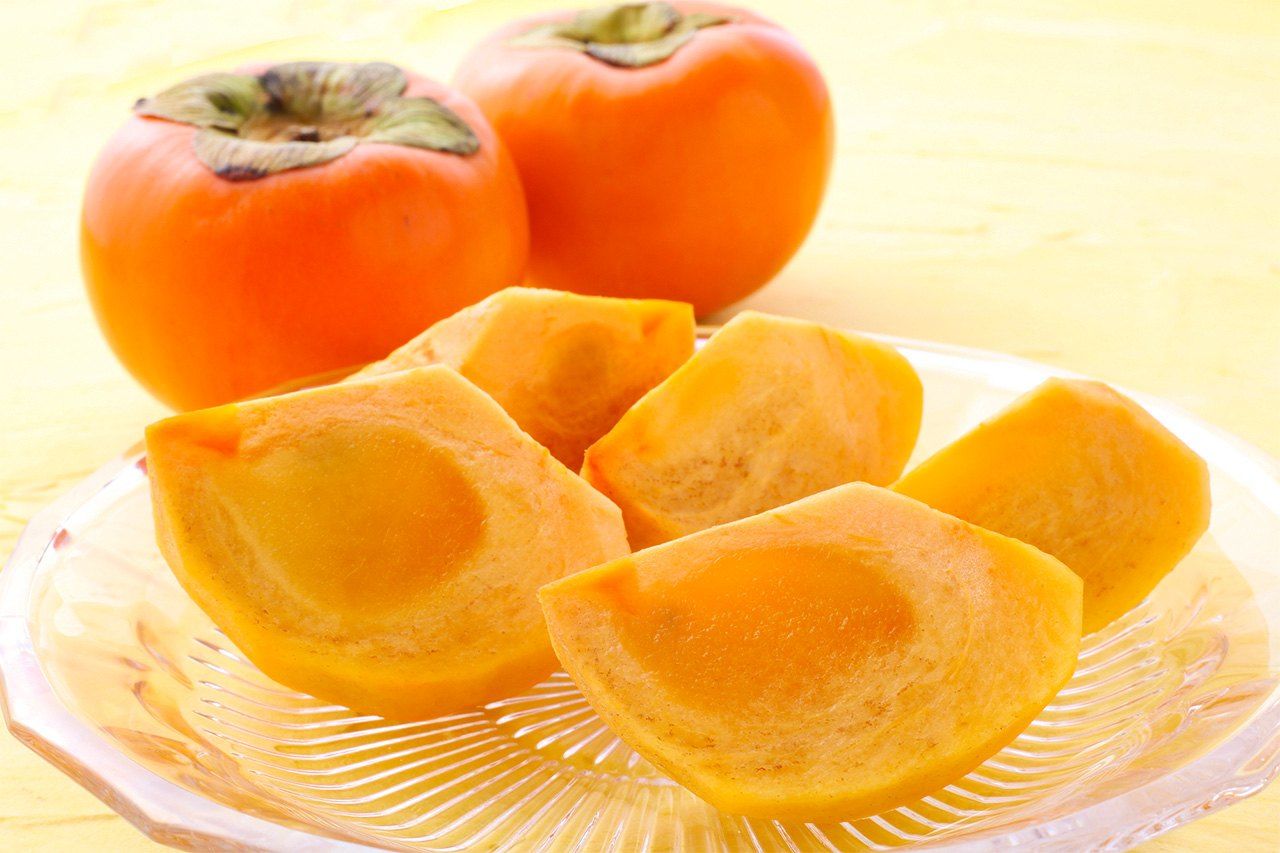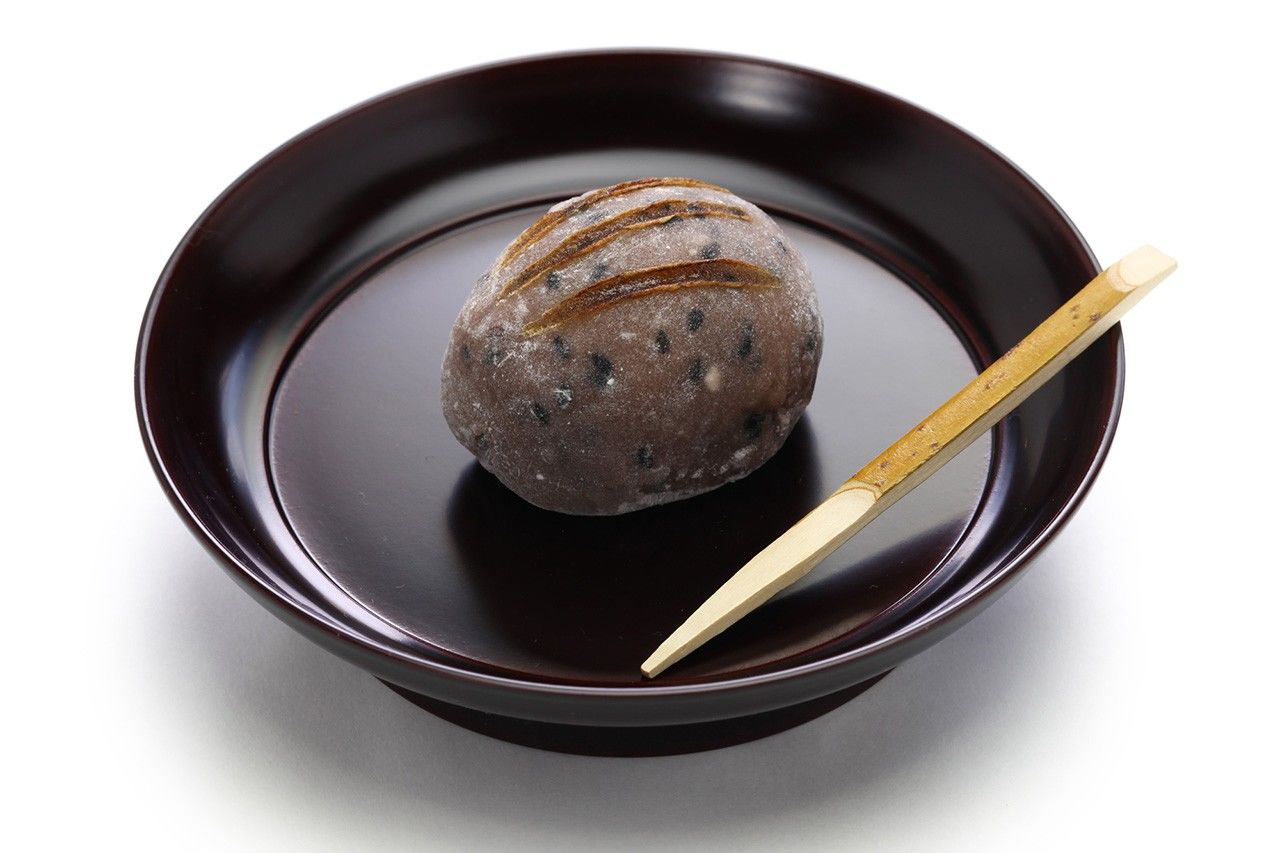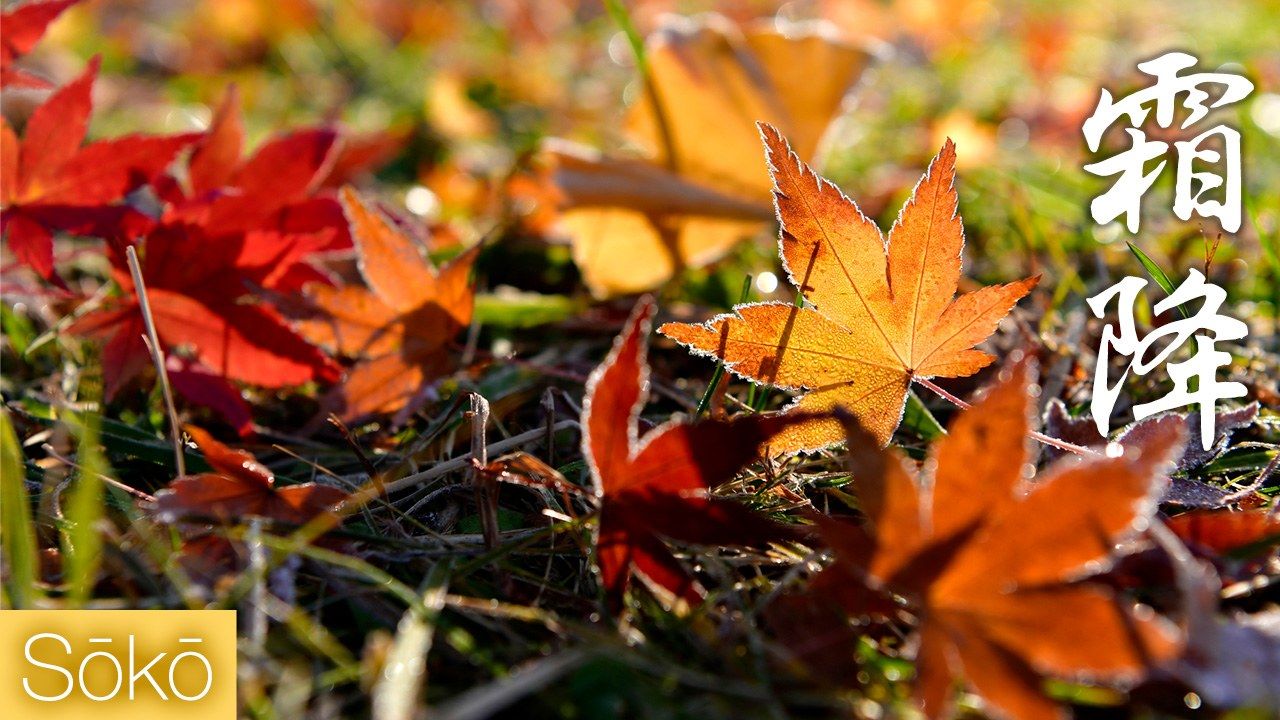
Sōkō (Frost Falls)
Culture Society Environment History- English
- 日本語
- 简体字
- 繁體字
- Français
- Español
- العربية
- Русский
The solar term known as Sōkō (Frost Falls) begins around October 24 in the modern calendar. Frosts begin to form in northern Japan and in mountainous regions. The leaves of trees gradually change color, and we can sense autumn all around us.
This article will look at events and natural phenomena in the period roughly from October 24 to November 7.
Autumn Leaves
The mountains are clothed in their autumn garments. Deciduous trees and shrubs take on vibrant colors, poetically referred to as kinshū, or “autumn brocade.” Glorious patterns are woven on the mountains by broad-leaved trees such as different species of maple trees, known in Japanese as momiji or kaede. The word momiji is derived from a verb momiizuru, referring to leaves changing color. Kaede is derived from an ancient word kaerude, meaning frog’s feet, from the shape of the leaves.
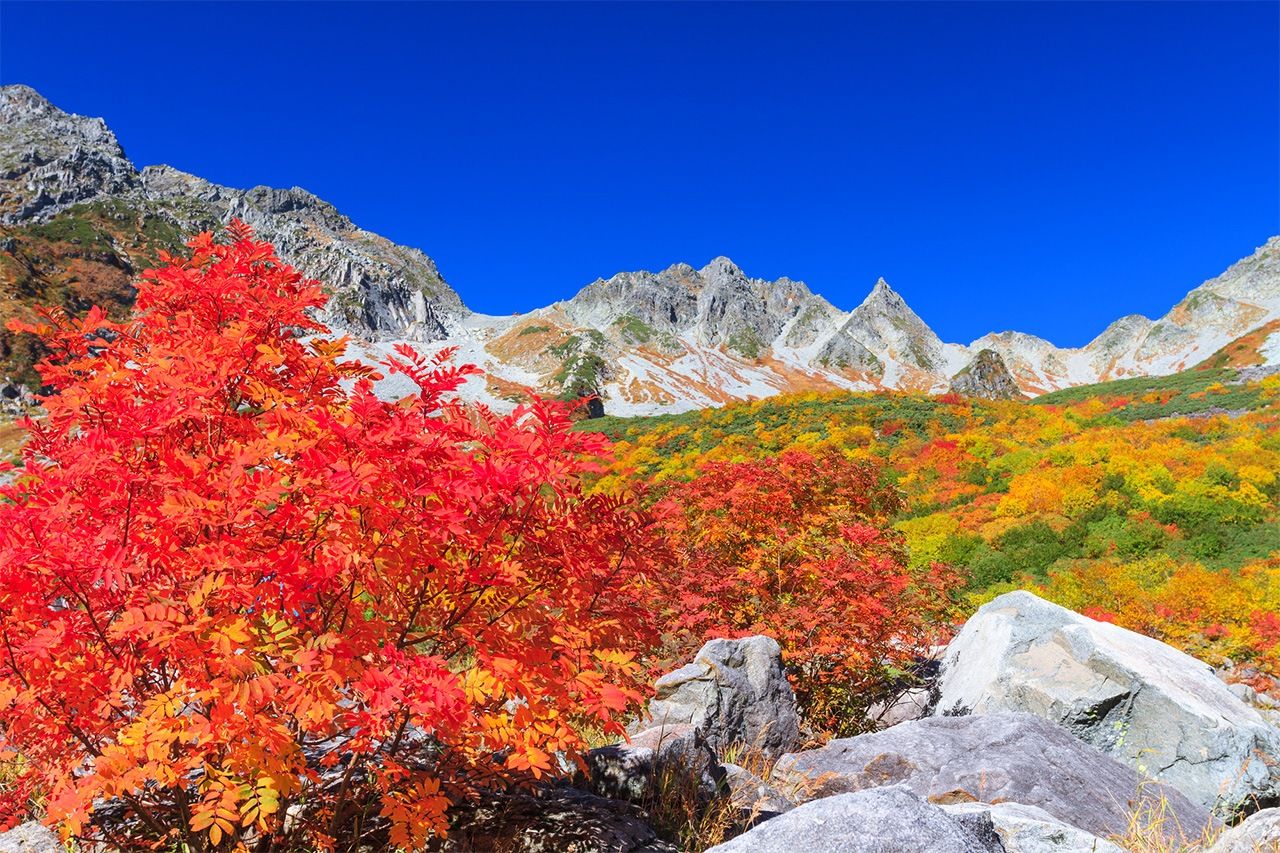
Autumn leaves in Karasawa Cirque, a valley formed by glacial erosion in Azumi, Matsumoto, Nagano Prefecture. (© Pixta)
Although the etymologies of the terms momiji and kaede differ, they are both general names for broad-leaved maple trees. In gardening, momiji refers to maples with deeper sinuses (spaces between their lobes), and kaede describes maples with shallower sinuses. Among famous varieties, the iroha momiji gets its name as it has seven lobes on each leaf, which is the same as the number of sounds in the opening of the famous iroha poem: irohanihoheto. The hauchiwa kaede is named for its resemblance to the magical hauchiwa or “feather fans” used by tengu.
Viewing autumn leaves is known as momijigari (literally “hunting autumn leaves”), and is a long-standing popular pastime, on a par with cherry-blossom and moon-viewing parties.
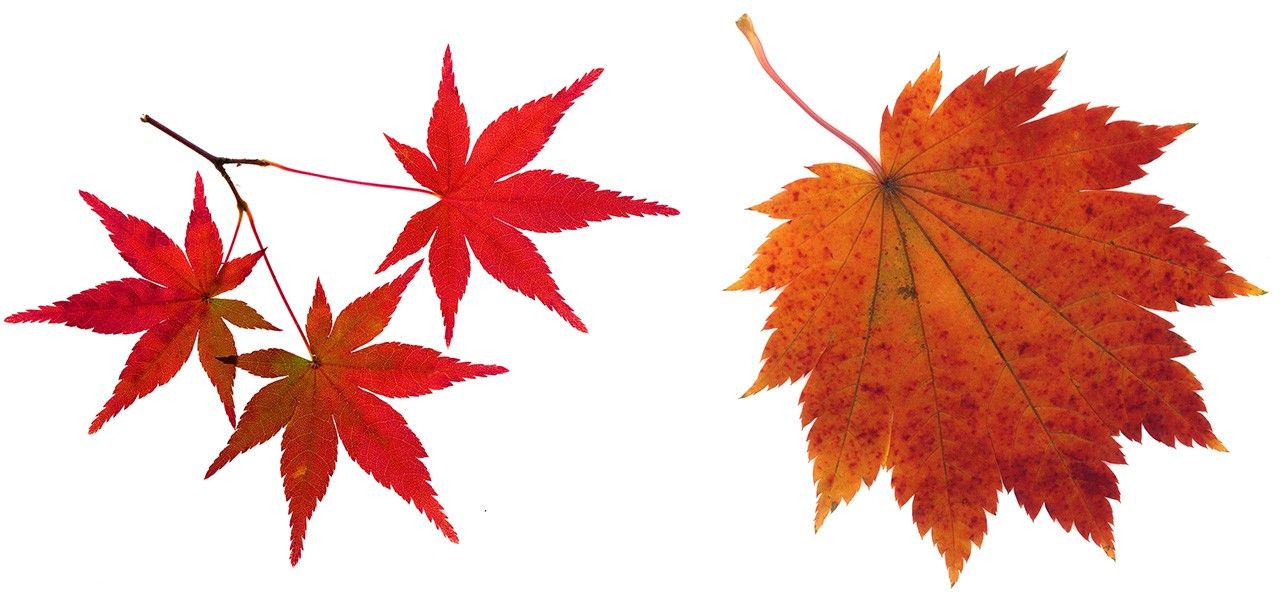
Leaves of iroha momiji (left); hauchiwa kaede. (© Pixta)
Kannazuki and Kamiarizuki
In the traditional calendar, the tenth month was called Kannazuki, “the godless month,” when the gods of Japan gather at Izumo Taisha Shrine in Shimane Prefecture. Conversely, in Izumo, it is called Kamiarizuki, or “the month of gods.”
Persimmon Day (October 26)
Kaki kueba / kane ga narunari / Hōryūji
I bite a persimmon and
a temple bell sounds—
Hōryūji
Poet Masaoka Shiki (1867–1902) composed a famous poem about hearing the temple bell of Hōryūji while eating a persimmon on a trip to Nara. Because he wrote the poem on October 26, 1895, the Japan Fruit Growers Cooperative Association declared October 26 as Persimmon Day in 2005.
Persimmons have a long history in Japan, and are known to have been cultivated as early as the Nara period (710–794). They contain abundant vitamin C and beta-carotene, and their health benefits are suggested in the Japanese proverb, “When the persimmons turn red, doctors turn pale.”
Uwatsuhiko Shrine Autumn Festival, Ehime Prefecture (October 29)
This is a key festival at Uwatsuhiko Shrine in Ehime Prefecture. The religious rites take place on October 28, and the festival on October 29. It began in 1649, during the reign of the former Uwajima domain’s first lord, Date Hidemune (eldest son of the famous Sendai daimyō Date Masamune). Giant ox-demon figures, five to six meters tall, lead the procession of the mikoshi (portable shrine) through the city to exorcise evil. Youths wearing red cloths and deer masks perform the yatsu shika odori (eight deers dance) to give thanks to the shrine’s god.
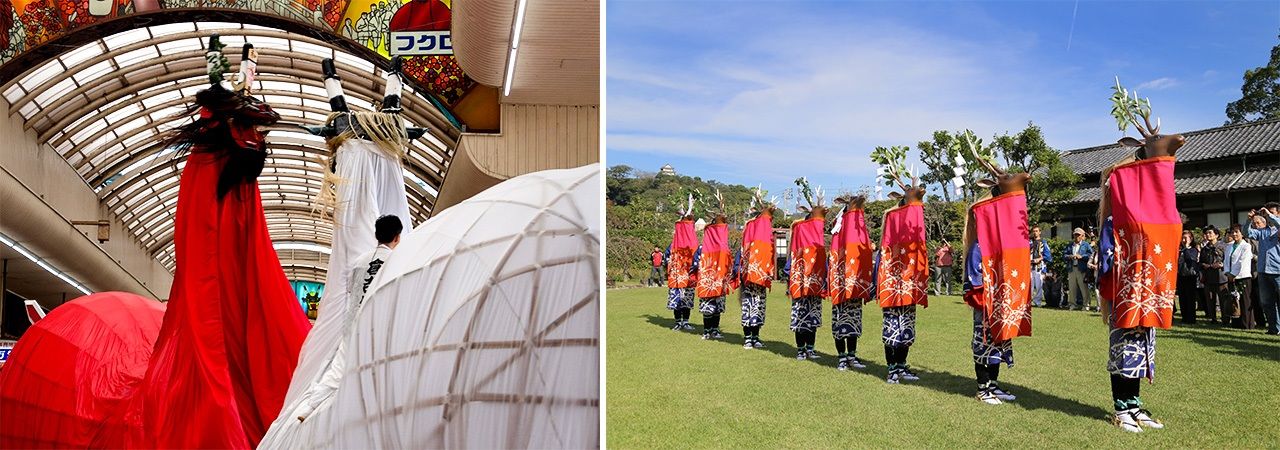
Uwatsuhiko Shrine Autumn Festival with its ox-demons (left) (© Pixta) and youths performing yatsu shika odori. (Courtesy Uwajima Hyakkei)
Halloween (October 31)
Originating as an autumn harvest festival to drive away evil spirits, Halloween was brought to the United States by European immigrants and is now also popular in Japan. Since the 2010s, young people in costume have gathered each Halloween in Shibuya, Tokyo, spurred on by posts on social media. In recent years, the police and riot squad have been present to control the swelling crowds.
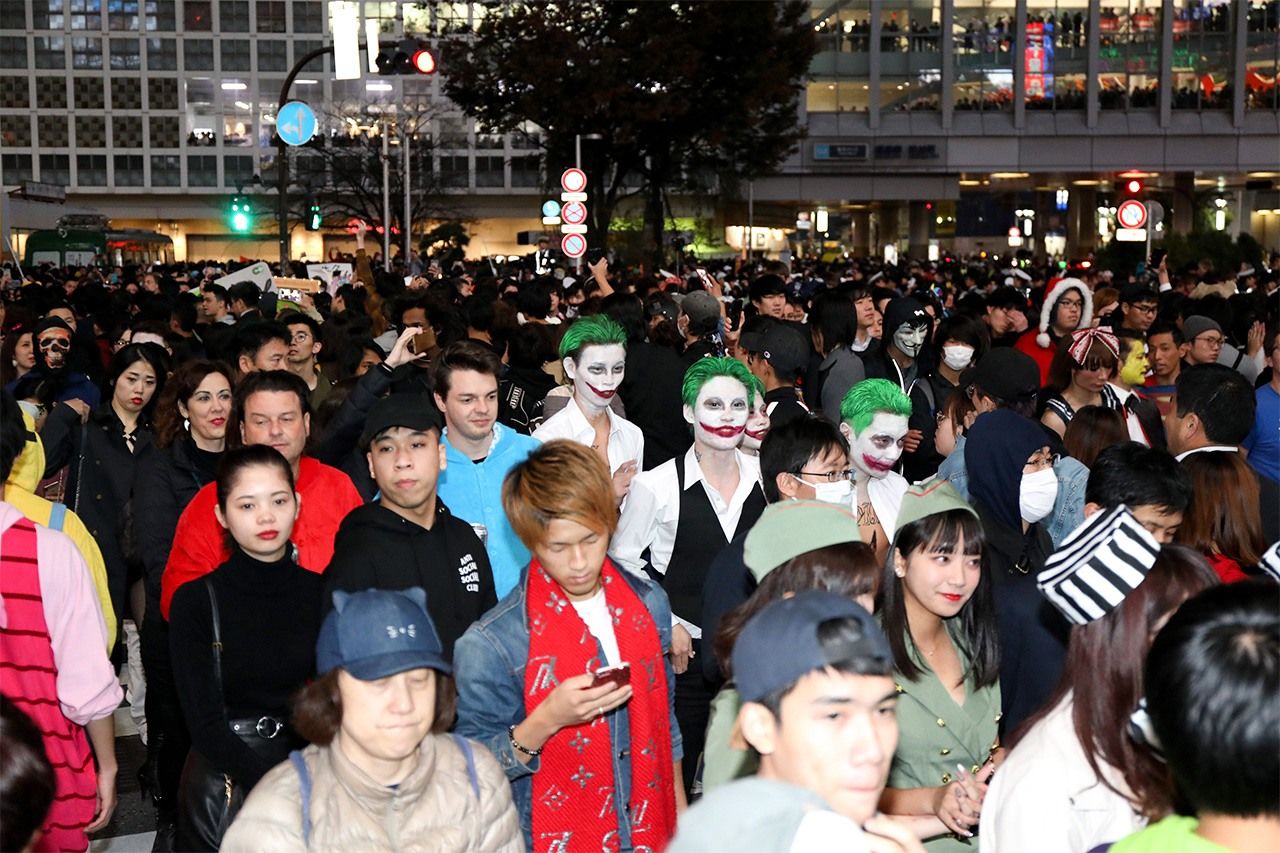
Crowds converge on Shibuya for Halloween on October 31, 2018. (© Jiji)
Acorns
Acorn is a generic term for nuts of oak trees. The shape of the acorn cup varies for different types of tree. Acorns were an important food in the Jōmon period (ca. 10,000–300 BC), but they were first treated to remove their bitterness. Through history, they have served as an emergency food during famines. They can also be boiled to produce a dye.
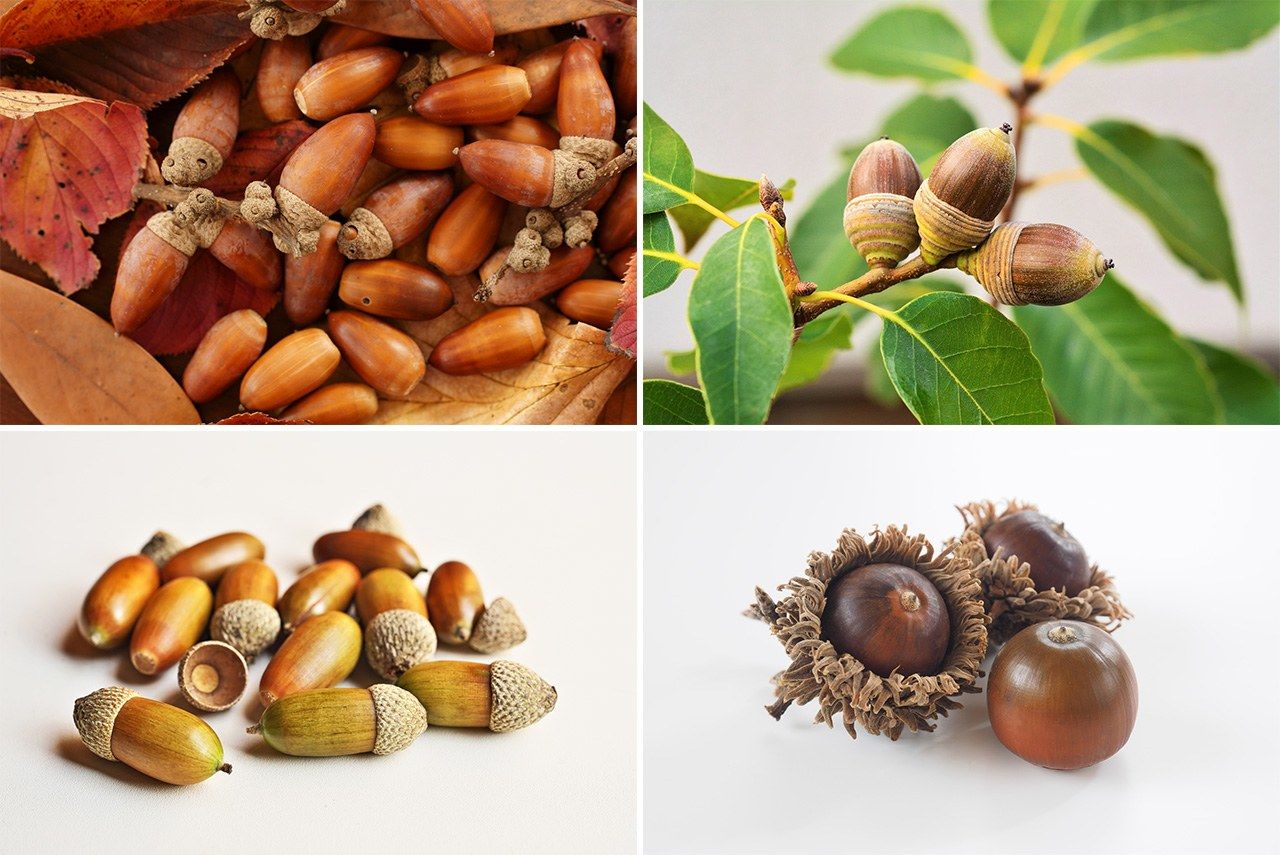
Clockwise from top-left: acorns of the shii (chinkapin), shirakashi (bamboo-leaved oak), kunugi (sawtooth oak), and konara (jolcham oak). (© Pixta)
Inoko mochi
Inoko mochi are sweet sticky rice cakes eaten on the first day of the boar in November (the tenth month in the old calendar). The tradition dates back to the Heian period (794–1185). Boars are known for their large litters, so by eating the inoko mochi it was hoped to ensure many offspring and prevent ill fortune. In tea ceremony, November is the month when the hearth used to boil water for making tea is moved from above ground (for the warmer months), to being sunken in the floor (for winter), a practice known as robiraki (“opening the hearth”). Boars were believed to be divine messengers that could protect people from fire, so the sweet is served at the robiraki tea ceremony.
Chestnuts
Chestnuts are popular at this time of year. Kachiguri or “dried chestnuts” with the husk and astringent skin removed by pounding with a mortar and pestle, were considered to symbolize victory for samurai in the Warring States period (1467–1568), because kachi is a homophone for the word “to win.” Consequently, chestnuts have come to feature in festive foods such as kurikinton (chestnut and sweet potato mash), popular in New Year osechi ryōri dishes and kurigohan (rice cooked with chestnuts), served for the Chrysanthemum Festival on September 9.

Chestnuts in their burrs (left); kanroni (candied chestnuts). (© Pixta)
(Supervised by Inoue Shōei, calendar researcher and author, Shintō minister, and guest lecturer at Tōhoku Fukushi University. Banner photo: Frost on autumn leaves. © Pixta)
